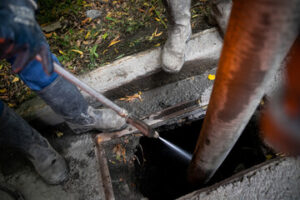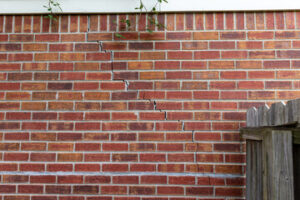The force of Hydro Jetting Houston breaks up and flushes away severe clogs. It also scours the pipe walls, preventing mineral build-up from developing.

First, the plumber inspects the pipes with a camera to determine the type and severity of blockage. The nozzle is then positioned at the ideal spot.
The pressurized water jets break up and wash away debris, clearing the entire pipe blockage. This method is also safe for old pipes because it doesn’t involve chemicals.
Hydro jetting is an effective, long-lasting solution to clogged drains. It uses a pressurized hose to blast away grease, tree roots and other obstructions in sewer lines, leaving pipes clean and free-flowing. This service saves homeowners, businesses and commercial property owners money by reducing the frequency of plumbing issues and by extending the lifespan of pipes.
Clogged or blocked pipes can be a serious health risk for your home or business. In addition to causing slow drainage and sewage backups, they can also create the perfect environment for mold, mildew and bacteria. Hydro jetting blasts away these toxins and flushes them down your drains, eliminating the bacteria that causes bad smells and potential health risks.
Unlike conventional drain cleaners, which often require a great deal of manual labor and can damage the integrity of your pipes, hydro jetting is safe for your pipes and environmentally friendly. The pressurized water is aimed at different angles, dislodging and washing away the debris, while also scrubbing the inside of your pipes to remove any mineral deposits or scale build-up.
The cost of hydro jetting will depend on the extent of the clog and its location in your plumbing system. The plumber will need to access the sewer line through your cleanout, which can be in a basement, crawlspace, or other hard-to-reach area. The cost will also increase if the plumber must use a video inspection to locate the clog and determine the best strategy for cleaning the pipe.
It is important to remember that hydro jetting is not a DIY project, and only licensed, trained professionals should be using this powerful equipment. The high-pressure water can cause severe injury or property damage if it is used by inexperienced people. It’s also essential to have your plumber inspect your sewer line before and after hydro jetting to ensure that the job is done correctly and safely.
Sewer lines are made of different materials than water pipes, which makes them more prone to clogs and blockages. Performing regular hydro jetting services can help extend the lifespan of your pipes, saving you money in repairs and replacements.
Eco-Friendly
The process of Hydro Jetting uses water to completely clean pipes and drains, eliminating the need for harsh chemicals that are harmful to the environment. This green method is safe for your pipes and the surrounding ecosystem, which is important in a community like Naperville where water conservation is such an important issue. Hydro jetting also helps prevent future blockages by thoroughly cleaning your pipes. This means you’ll have fewer problems in the future and can save money on costly repairs and replacements.
In addition, the water used for Hydro jetting is recycled and reused, further reducing your environmental footprint. The pressurized water quickly and easily breaks up grease, mineral deposits, and tree roots, which can cause clogs. It also clears out all drain openings and can even remove stubborn clogs that have failed to respond to traditional methods like snaking or chemical cleaners. The water also thoroughly scrubs pipe walls, which reduces the chances of future blockages.
Another benefit of hydro jetting is that it doesn’t waste water like other drain cleaning methods. For example, traditional drain cleaners can use so much water that it can actually flood your property. In addition, using tools like plungers and plumbing snakes can actually push clogs deeper into your plumbing lines. Hydro jetting, on the other hand, uses only a small amount of water to clean your entire system and ensures that your clogs are fully eliminated.
Moreover, this environmentally friendly drain cleaning method is suitable for a wide range of commercial facilities. Restaurants in particular can experience significant clogs from fats, oils, and grease (FOG) that can lead to sewer backups. Hydro jetting can effectively clear these difficult clogs and ensure that your commercial plumbing is functioning properly.
While the water pressure from hydro jetting is high, it is not as high as the pressure that is applied in sewage pipes. However, the experts at Harris Plumbing, Heating, Air, & Electric recommend that you have your pipes inspected before having them hydro jeted. This is because older pipes are more prone to damage from high-pressure water, and they may require replacement.
Safe
If plungers and drain snakes fail to cut through stubborn clogs, it’s time to call in the big guns: hydro jetting. This method uses water pressure of up to 8,000 psi to blast through and dislodge tree roots, mineral deposits, and other debris that can block your pipes and cause wastewater to back up into your home. Because it is so powerful, you may worry that this high-pressure technique could damage your pipes, but the truth is that hydro jetting is safe for your plumbing system when used properly.
When performed by an experienced plumber, the high-pressure water can cut through even the most stubborn clogs without damaging your pipes. However, you will need to conduct a professional inspection of your pipes to determine their condition and whether or not hydro jetting is right for them. If you have old, fragile pipes, this high-pressure cleaning method might worsen the cracks and leaks that are already present in them.
On the other hand, if your pipes are in good condition, hydro jetting can keep them clean four times longer than traditional drain cleaning methods. In addition, it is more eco-friendly and doesn’t rely on chemicals to remove clogs. This makes it an ideal solution for homeowners who want to reduce their reliance on chemical-based cleaners and reduce their environmental impact.
Inexperienced plumbers may use too much pressure or accidentally nick the sides of your pipes while working on your clogs. Hydro jetting is a safe option when performed by professionals who know how to use the equipment correctly and can adjust their pressure settings according to your pipes’ condition and material.
It’s also important to note that Orangeburg pipes cannot be hydro-jetted. These are made with wood pulp sealed with hot pitch and will be torn apart by the high-pressure water. If you have Orangeburg pipes in your home, you should consider having them replaced as soon as possible to avoid future problems.
If you’ve been noticing hissing, bubbling, or gurgling noises coming from your plumbing system, it’s likely that your pipes are clogged. Calling a plumber for a video inspection and then scheduling hydro jetting is the best way to get rid of the clogs and prevent them from recurring.
Reliable
Hydro jetting is a reliable way to remove stubborn obstructions from pipes. It is a safe, non-invasive and cost-efficient alternative to traditional drain cleaning methods such as pipe snaking. The process begins with a thorough inspection of the affected pipes to determine the type and location of the obstruction. The plumber then uses a water tank, high-pressure hose, and specifically designed nozzle to create a powerful jet stream of clean, potable water. The plumber inserts the nozzle into the affected pipe, and the high-pressure water cleans the inside of the pipe.
The high-pressure water is capable of removing a variety of obstructions including tree roots, sludge and sediment, scale, grease, mineral deposits, and other debris. It is also effective at removing the thick residue that builds up in sewer lines from everyday use, such as soap, food scraps, and hair. The resulting clean, flushed pipes prevent future clogs and ensure optimal plumbing function.
Unlike traditional snaking, which physically breaks through a blockage, hydro jetting scourers the entire surface of the pipe walls, making it a superior option for larger commercial and municipal pipes with wider diameters. It is also more effective at removing and dislodging tree roots that have infiltrated underground sewer lines.
The process of using a hydro-jet to clean pipes is not without risks, however. The high-pressure water can damage piping materials over time, especially in older systems. To mitigate this risk, the plumber must thoroughly inspect the pipes with a camera prior to hydro jetting. The camera will identify any damage or weakened waterproof coatings that could be further compromised by the high-pressure water jet.
While the benefits of Hydro Jetting are clear, it is important to have a professional plumber assess the state of your pipes before using this technology.

